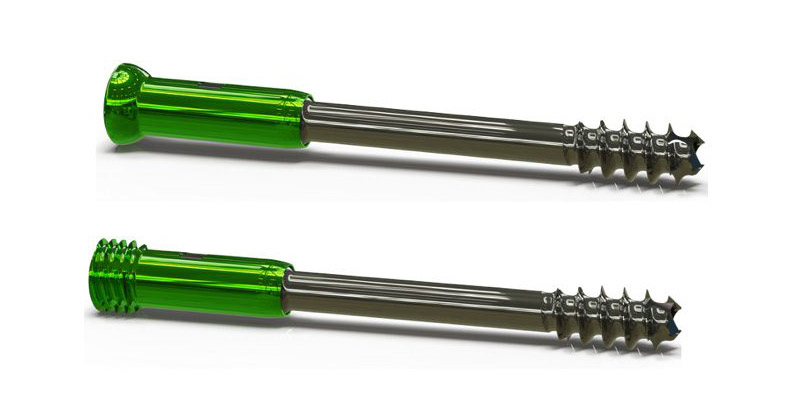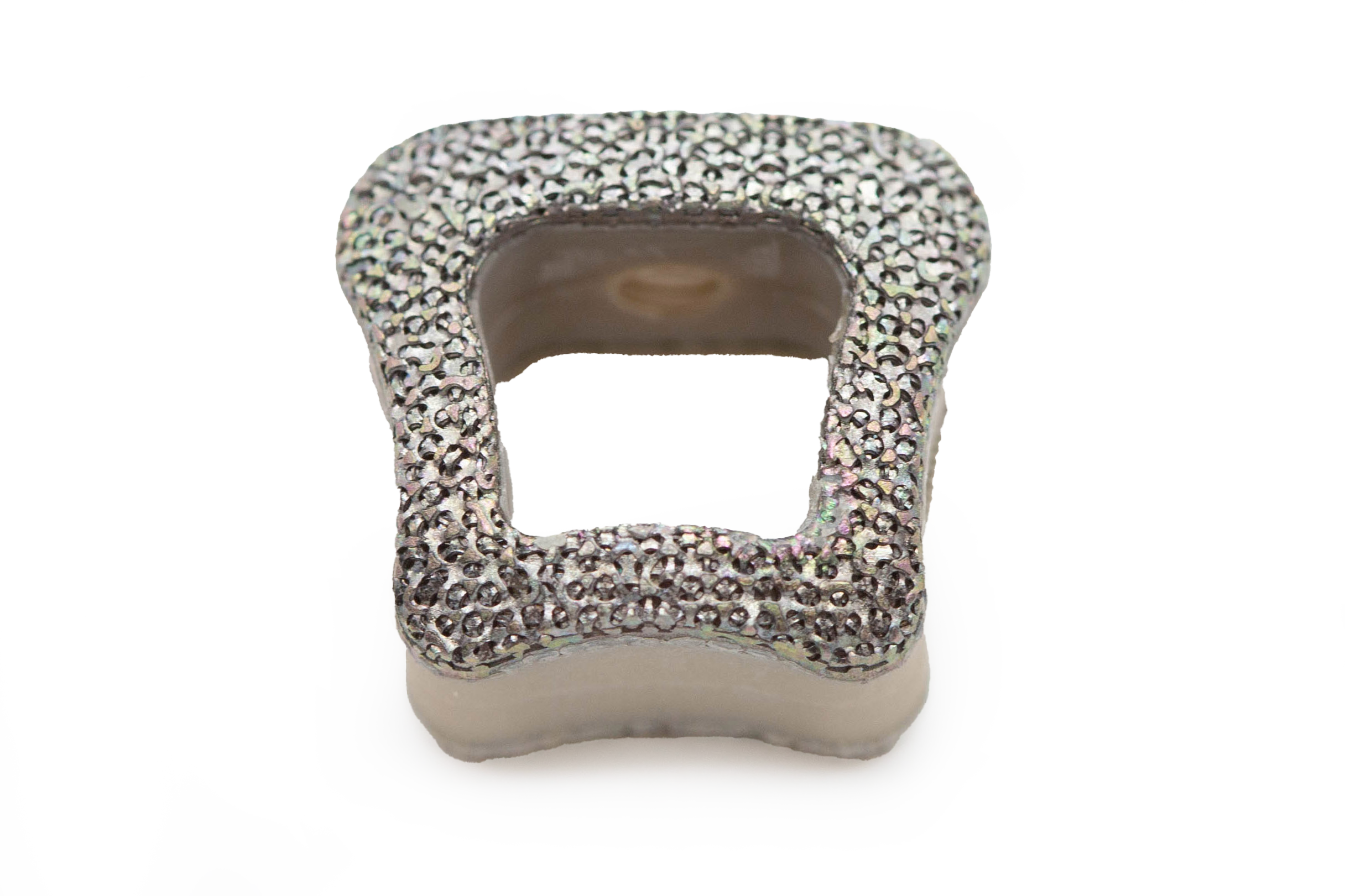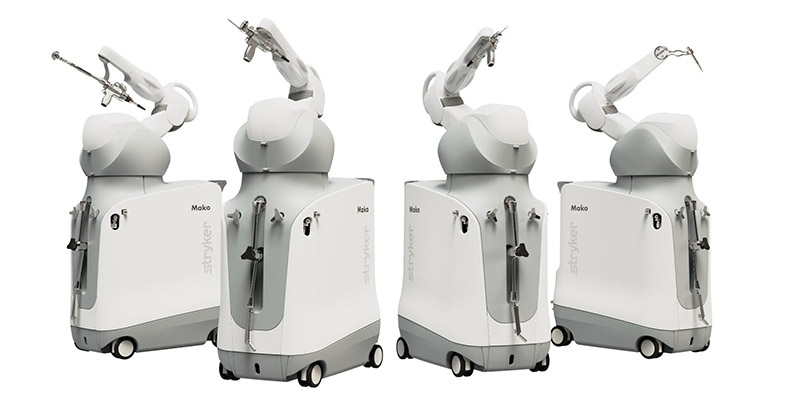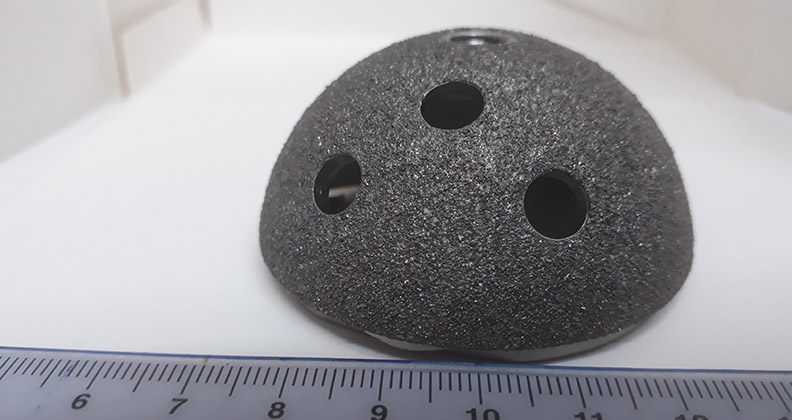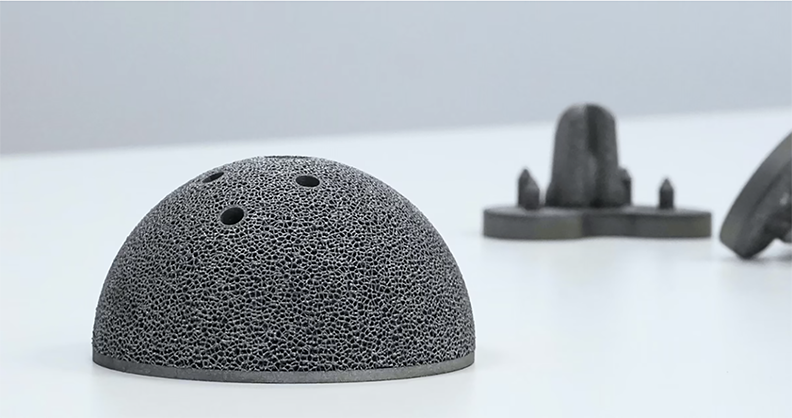
Orthopedic product development engineers are increasingly drawn to additive manufacturing for its ability to create intricate lattice geometries, speed up prototyping and shorten the path to market. While structural innovation is an important starting point, it’s the materials that allow engineers to reach additive manufacturing’s true potential and deliver implants that surpass the performance of subtractive manufacturing.
These three materials are emerging as keys to unlocking new possibilities in 3D printing and orthopedic implant design.
Bioceramics
Ceramics are on a fast growth trajectory within additive manufacturing, with projections suggesting the segment could reach $1 billion by 2032, according to Craig Rosenblum, President of Himed. Within that growth, bioactive and bioresorbable ceramics represent a significant, largely untapped opportunity.
Rosenblum highlighted hydroxyapatite (HA) and tricalcium phosphate (TCP) as two critical materials. HA is stable and promotes strong osteogenic response, while TCP is bioresorbable, typically resorbing within months, making it suitable for applications where bone is expected to gradually replace the implant.
Himed employs the CeraFab S65 ceramic printer from Lithoz, which prints using a slurry of HA or TCP powder and polymer.
“The material needs to flow well,” Rosenblum said, “and the powder that’s used to create the slurry must have the right particle shape, size distribution, morphology and surface area. Those parameters are critical.”
Despite the strength and heat resistance of ceramics, brittleness remains a drawback. “That’s the trade-off, which is why material properties and processing controls are absolutely essential,” Rosenblum said.
Bioceramics are well suited for patient-specific implants and small, complex parts, offering tailored porosity and geometries that subtractive manufacturing can’t match. Rosenblum is particularly excited by multi-material printing, which could mitigate the brittleness of ceramics and enable the creation of implants with site-specific material properties.
Himed offers biphasic calcium phosphate — a homogeneous blend of 20% HA and tricalcium 80% TCP — but what’s especially promising to Rosenblum is the potential to go beyond homogeneous blends with multi-material printing technology.
“Imagine being able to print two materials simultaneously,” he said. “You could create a device where one end is rich in HA and the other is rich in TCP.”
Tantalum
Tantalum is gaining recognition because of its potential to reshape load-bearing implant design. Bryan Naab, Ph.D., Additive Manufacturing Engineer at Croom Medical, believes tantalum is a game-changer in the creation of next-level devices.
To highlight the tantalum’s potential, Dr. Naab ran through the inherent limitations of traditional implant metals.
Stainless steel is affordable, strong and easy to machine, but prone to corrosion and stress shielding. Cobalt chrome is durable but stiff and risks metal ion leaching. Titanium is biocompatible and strong but costly and sometimes toxic due to alloying elements.
By contrast, tantalum exhibits outstanding biocompatibility and osseointegration, properties that are especially critical for orthopedic implants.
“It also has extremely high ductility,” Dr. Naab noted. “That’s important because it leads to a very predictable failure mode. Unlike brittle materials, tantalum fails in a much more controlled manner.”
Another advantage is tantalum’s strong bond with titanium. Additive manufacturing enables the creation of devices in which titanium provides bulk strength while tantalum forms the bone interface.
“You could use it as part of a hybrid construct at the bone interface,” Dr. Naab said.
Still, tantalum is expensive and difficult to scale with subtractive manufacturing methods. “That’s where additive manufacturing becomes key,” Dr. Naab said. “If we want to unlock the unique advantages of tantalum, additive is the ideal technology to use.”
Resorbable Polymers
Poly-Med is working to expand additive manufacturing applications by combining polymers with bioactive ceramics such as β-tricalcium phosphate (β-TCP) and bioactive glass. The goal is to create regenerative implants that integrate with bone while gradually resorbing.
“We’ve worked on high-tolerance parts that are fully porous and custom-fit based on CT data,” said Scott Taylor, Ph.D., Chief Technology Officer at Poly-Med. “With these composite materials, we’re seeing strong bony integration throughout the lattice structures.”
While absorbable thermoplastics date back to the 1970s with sutures, additive manufacturing demands new light-curable polymers engineered for biocompatibility throughout their degradation timeline. These polymers must break down into byproducts while offering mechanical properties that are compatible with multiple printing methods.
“What’s exciting is that these resorbable materials are process-agnostic,” Dr. Taylor said. “They can be printed on a number of different printers.”
Poly-Med’s research includes experimenting with foam structures, cellular scaffolds and Voronoi patterns, with infill strategies chosen based on mechanical demands.
Beyond bone repair, the company is also developing materials that guide cell differentiation into cartilage. As cells mature, the material degrades, leaving behind only the regenerated tissue.
“The materials provide an initial performance characteristic that gradually disappears over time,” Dr. Taylor said. “Ideally, you’re left with high-quality healing and no residual foreign material challenges associated with more traditional plastics.”
Read more about these topics in the full-length version of this article.
DC
Dan Cook is a Senior Editor at ORTHOWORLD. He develops content focused on important industry trends, top thought leaders and innovative technologies.

